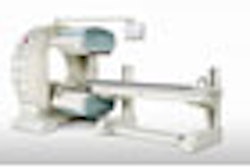A research study from the University of Michigan in Ann Arbor finds that diffusion MRI and FDG-PET are two influential imaging biomarkers for quantifying tumor inflammatory response and macrophage infiltration after treatment.
The National Cancer Institute estimates that as many as 560,000 people in the U.S. will contract cancer this year. In addition, the number of cancer cases could increase by as much as 30% to 50% in the next 12 to 15 years, placing a heavier burden on the U.S. healthcare system.
With an ever-growing elderly population and the expected hike in cancer rates, researchers are looking for ways to improve cancer detection and treatment with a more effective and targeted approach. One issue is determining when cancer responds to treatment and when tumors may recur. Imaging biomarkers are seen as a beneficial resource toward that goal.
The University of Michigan study notes that MRI has been used to monitor changes in tumor water diffusion values during treatment "as a surrogate for alterations of cell density and cell membrane function and microenvironment, while PET has been used widely for the assessment of changes in tumor glucose uptake."
Test groups
Researchers used four animal groups: a control group; a group for dexamethasone, an anti-inflammatory steroid designed to block post-treatment inflammation; a group that received 1,3-bis(2-chloroethyl)-1-nitrosourea (BCNU); and a fourth group that received BCNU and dexamethasone.
For all the studies, BCNU was given as a single bolus right after a baseline scan. Tumors were imaged using diffusion MRI and FDG-PET at days zero, three, and seven post-treatment. For the dexamethasone group, there was a three-day pretreatment prior to initial scans, then a seven-day follow- up.
Speaking at the first annual joint conference of the Academy of Molecular Imaging (AMI) and Society of Molecular Imaging (SMI) in Providence, RI, study co-author Kuei Chung Lee said there is generally FDG uptake in animals right after treatment, then a decrease in FDG uptake on day three, as cells begin to die because of the therapy.
By day seven, there is unexpected increase in FDG uptake. "That is what we believe to be the infiltration of the macrophage in the microglia that is sucking up the glucose in that area," Lee said.
The researchers found changes in the apparent diffusion coefficient (ADC) in diffusion MRI, which noted ADC values "increasing significantly" at days three and seven (post-treatment) in both the BCNU and dexamethasone groups compared to the control group.
SUV changes
Standard uptake value (SUV) of tumor FDG decreased at day three (down 27%), but increased at day seven (up 15%), compared to the baseline, following BCNU treatment.
FDG-PET studies for BCNU/dexamethasone-treated animals uncovered reduced FDG uptake at days three (down 30%) and seven (down 25%) following treatment.
In the control group, SUVs changed at days three and seven. There was an increase in FDG uptake, but Lee described the occurrence as "not significant." With dexamethasone, there was a slight decrease in SUV, but again he termed it "not significant."
Immunohistochemical staining for macrophages within tumors was accomplished in a separate cohort of animals, which revealed a large influx of tumor macrophages occurred seven days after treatment, but was blocked by dexamethasone.
"Both FDG-PET and diffusion MRI were able to detect early treatment response at day three. FDG-PET is susceptible to the tumor inflammatory response, resulting in the increase at day seven. However, when you inhibit macrophage and microglia infiltration using dexamethasone, you get that expected decrease in FDG uptake consistent with a positive (treatment) response," Lee concluded.
ADC also showed when treatment was successful and the effect of tumor inflammatory response, as noted in the 30% decrease in the diffusion change with dexamethasone.
By Wayne Forrest
AuntMinnie.com staff writer
November 2, 2007
Related Reading
SUV on FDG-PET can predict cervical cancer prognosis, September 19, 2007
Pilot study shows link between FDG uptake and biomarkers of cervical cancer, September 11, 2007
ROI can influence quantitative FDG-PET study results, September 11, 2007
Fused MRI and PET improve specificity of breast MRI, August 17, 2007
PET changes oncology management, study shows, July 19, 2007
Copyright © 2007 AuntMinnie.com




















